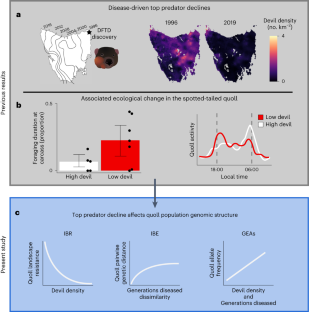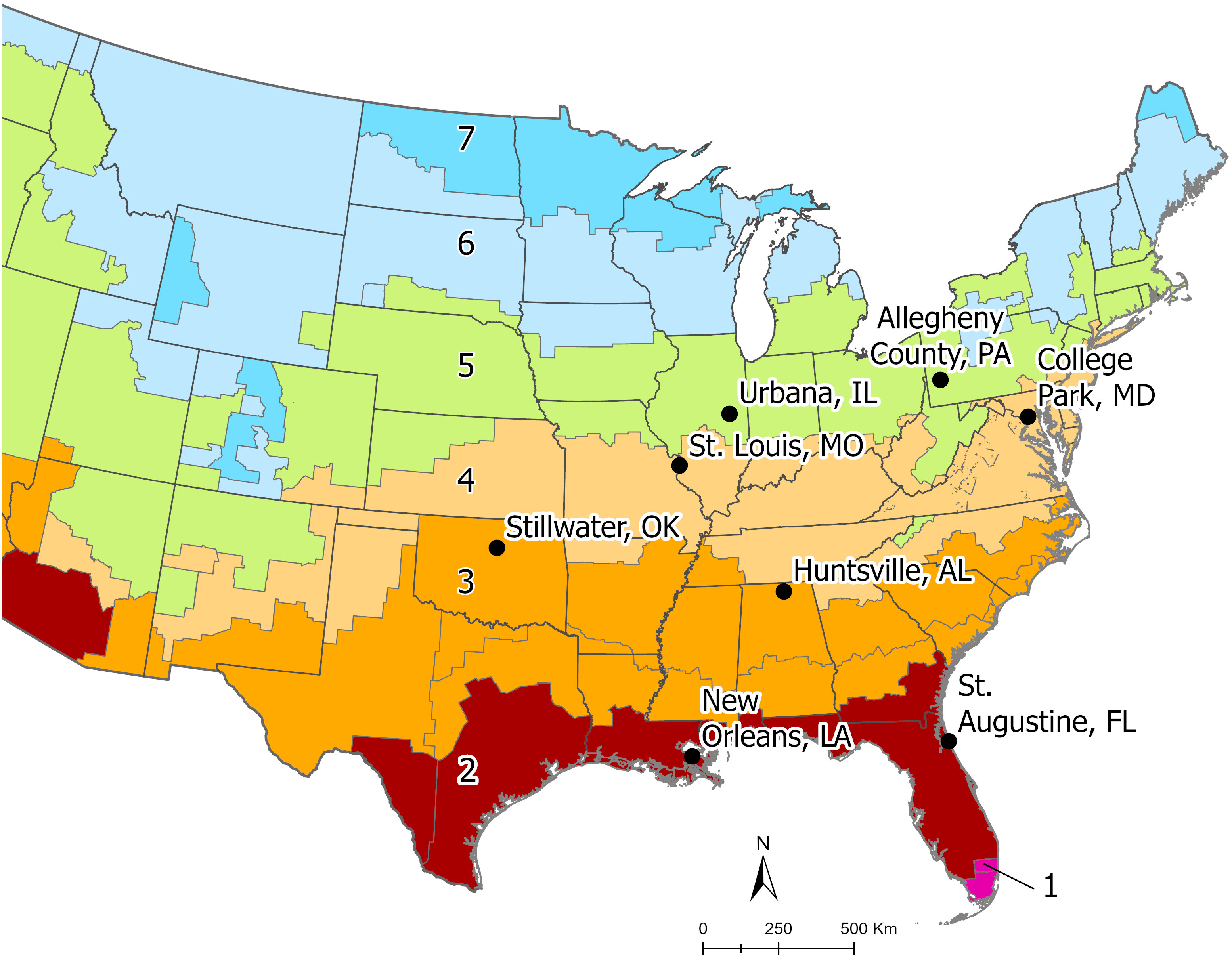2024-01-08 ワシントン州立大学(WSU)
◆研究者らはクオールのゲノムデータを調査し、DFTDの影響に関連する遺伝的変異や自然選択の証拠を見つけました。クオールの遺伝的類似性がDFTDの発生率と関連しており、競争の減少から生じると考えられる減少した遺伝子フローと増加した人口構造の証拠が見つかりました。研究者らはこれがグローバルなプレデター減少の進化的結果を理解するための新しいアプローチである可能性があると述べています。
<関連情報>
- https://news.wsu.edu/press-release/2024/01/08/tasmanian-devil-die-off-may-be-affecting-fellow-predators-genetics/
- https://www.nature.com/articles/s41559-023-02265-9
病気による上位捕食者の減少は中位捕食者集団のゲノム構造に影響する Disease-driven top predator decline affects mesopredator population genomic structure
Marc A. Beer,Kirstin M. Proft,Anne Veillet,Christopher P. Kozakiewicz,David G. Hamilton,Rodrigo Hamede,Hamish McCallum,Paul A. Hohenlohe,Christopher P. Burridge,Mark J. Margres,Menna E. Jones & Andrew Storfer
Nature Ecology & Evolution Published:08 January 2024
DOI:https://doi.org/10.1038/s41559-023-02265-9

Abstract
Top predator declines are pervasive and often have dramatic effects on ecological communities via changes in food web dynamics, but their evolutionary consequences are virtually unknown. Tasmania’s top terrestrial predator, the Tasmanian devil, is declining due to a lethal transmissible cancer. Spotted-tailed quolls benefit via mesopredator release, and they alter their behaviour and resource use concomitant with devil declines and increased disease duration. Here, using a landscape community genomics framework to identify environmental drivers of population genomic structure and signatures of selection, we show that these biotic factors are consistently among the top variables explaining genomic structure of the quoll. Landscape resistance negatively correlates with devil density, suggesting that devil declines will increase quoll genetic subdivision over time, despite no change in quoll densities detected by camera trap studies. Devil density also contributes to signatures of selection in the quoll genome, including genes associated with muscle development and locomotion. Our results provide some of the first evidence of the evolutionary impacts of competition between a top predator and a mesopredator species in the context of a trophic cascade. As top predator declines are increasing globally, our framework can serve as a model for future studies of evolutionary impacts of altered ecological interactions.


